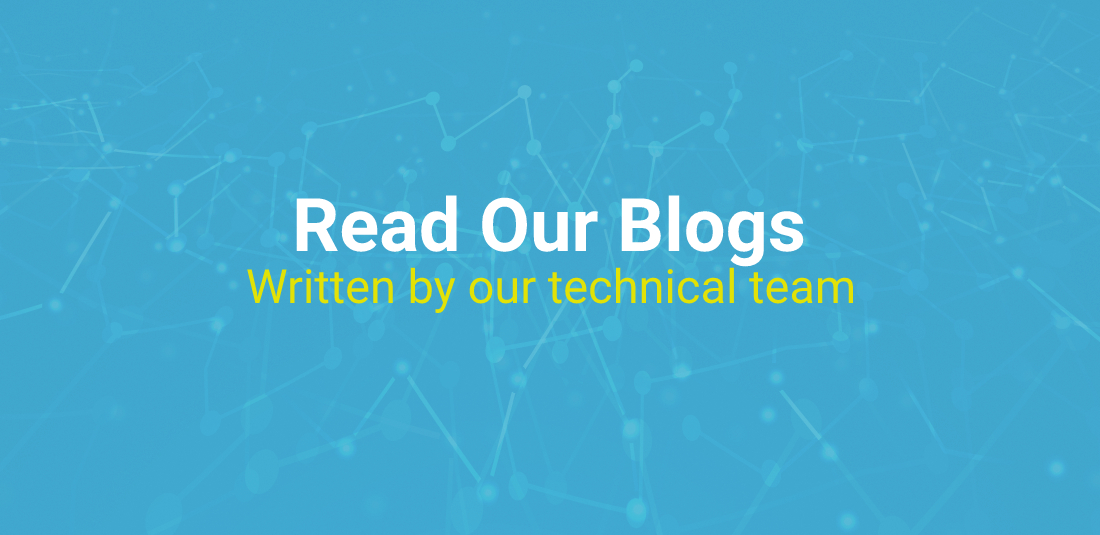Blogs or Expert Columns
FastAPI
FastAPI FastAPI is a modern, high-performance Python framework tailored for building APIs with speed, type safety, and automatic documentation. It's built on Starlette and Pydantic, making it ideal for scalable, asynchronous applications. Core Architechture of FastAPI: Built on Starlette: Handles routing, middleware, WebSockets, and background tasks. It’s lightweight and asynchronous by design. Powered by Pydantic: Enables robust data validation and parsing using Python type hints. This ensures clean, reliable request/response models. Async-first design: FastAPI embraces async/await, making it suitable for high-concurrency workloads like chat apps, dashboards, and microservices. Key Features of [...]
OpenAgents
OpenAgents: Your Blueprint for the Autonomous AI Revolution In the constantly shifting sands of the Artificial Intelligence (AI) world, a concept has moved from futuristic vision to present-day reality: the autonomous AI agent. These aren't your typical chatbots or simple prediction models; they are self-directed, thinking entities. At the forefront of this transformative wave is OpenAgents, a powerful, open-source platform that's not just talking about the future of AI—it’s building it. OpenAgents is fundamentally changing the playbook for developers and businesses. It allows you to create AI agents capable of independent reasoning, complex task execution, and adaptive learning [...]
Azure AI Foundry Agent Service
Azure AI Foundry Agent Service: The Technical Engine of Autonomous Enterprise Intelligence From Chatbots to Autonomous AI Agents Let's face it, for years, AI was limited. It could classify data, sure. It could write a passable email. But it was always passive. You had to prompt it; you had to execute its ideas. Today, enterprises don't just need AI that can talk; they need AI that can act, decide, and perform autonomously. This is the evolution of AI agents, and Microsoft's Azure AI Foundry Agent Service is how you deploy them. It’s the structured framework that lets your [...]
Prometheus and Grafana
From Chaos to Clarity: How Prometheus + Grafana Bring Your Metrics to Life “We were drowning in logs, alerts, and dashboards that told us only that something was wrong—but not why. Then we discovered Prometheus and Grafana. Suddenly, our systems spoke to us.” That's a refrain I’ve heard (and felt) from many teams over the years. Monitoring is more than watching—it’s understanding. And the popular duo of Prometheus + Grafana has become the de facto standard in many observability stacks. Together, they let you collect, query, visualize, and alert on time-series metrics—with clarity, flexibility, and control. [...]
AutoGPT
Let AI Work for You: Build, Run, Automate with AutoGPT Imagine telling an AI: “Grow my blog’s traffic 20% this quarter,” and watching it autonomously devise a content calendar, generate drafts, optimize SEO, and even publish—without you writing a single prompt each step of the way. That’s the promise (and challenge) of AutoGPT, the opensource “agent of agents” built on GPT models that’s stirring both excitement and skepticism across the AI world. In this article, we’ll walk you through what AutoGPT is, why people use it (and where it falls short), real project references, alternatives, and what’s on [...]
Azure AI Foundry
Azure AI Foundry: The Only OS Your Enterprise AI Needs The Challenge of Building AI at Enterprise Scale Let's cut to the chase: You need AI that performs, not just experiments that demo well. The goal is integrated intelligence that transforms your business, but the reality is a fragmented mess. Scaling AI hits the same walls every time: Model Chaos: Managing multiple foundation models (FMs) for different tasks with zero central control. Data Silos: Your shiny new LLM can't securely connect to your core enterprise data lakes and systems. Compliance Risk: Governance, security, and auditability are afterthought patches, [...]
Amazon Aurora
Amazon Aurora Explained: A Modern Cloud Database for Scalable Apps The Database Crisis in the Cloud Era The database is the foundational pillar of modern digital commerce. Yet, for years, platform architects and engineers have been forced into a difficult database compromise: sacrificing agility for reliability, or speed for cost. The reality of running traditional relational databases (even on cloud virtual machines) is a cycle of operational burden: manual scaling efforts, complex replication management, and constant fear of I/O bottlenecks during peak load. These systems were simply not engineered for the elastic, unpredictable demands of true cloud-native applications. [...]
Cloud-Native, Scalable, Role-Based IAM
Cloud-Native, Scalable, Role-Based IAM: The Backbone of Secure Modern Systems Your team has just launched a new microservices platform for your product — several services talk to each other, access sensitive data, and users authenticate via your identity provider. One day, someone accidentally gives “admin” privileges to a junior developer. That developer’s account is compromised, and suddenly critical functions are being altered, data exfiltrated, billing abused. It takes days to audit logs, roll back, and re-secure. That’s why Identity & Access Management (IAM) is not just security hygiene — it’s vital infrastructure. But as systems evolve (from monoliths [...]
Azure Container Apps
Azure Container Apps: The "Easy Button" for Cloud-Native Superpowers Imagine you’re a developer who needs to ship applications fast, scale effortlessly, and use the latest cloud-native patterns like microservices and event-driven architectures. You know Kubernetes (K8s) is the engine for all this power, but managing it feels like maintaining a Formula 1 race car—you need a full pit crew (DevOps team) just to keep the tires inflated. That's the core struggle of the cloud-native era: immense potential locked behind immense complexity. Enter Azure Container Apps (ACA). The ACA Philosophy: Power Without the Pit [...]
Knative
Knative: Revolutionizing Cloud-Native Serverless Workloads Imagine a world where you can focus solely on writing code, without worrying about how to scale it, deploy it, or manage the underlying infrastructure. Sounds like a dream? Well, Knative is turning this dream into reality. In today’s fast-paced digital landscape, enterprises are shifting from monolithic applications to microservices and event-driven architectures. Cloud-native technologies are not just buzzwords anymore—they’re the backbone of modern business agility. And at the heart of this transformation lies Knative, a powerful open-source platform that makes building, deploying, and managing serverless workloads on Kubernetes seamless. [...]
OCR and LayoutLMv3
OCR and LayoutLMv3: The Future of Document AI and Intelligent Document Processing Picture this: You’re an employee in the finance department. It’s the end of the month, and invoices are piling up. Each one needs to be scanned, checked, and entered into the system. You spend hours staring at PDFs, manually typing totals, vendor names, and invoice numbers into a spreadsheet. It’s repetitive, error-prone, and frankly — exhausting. Now imagine a system that does all of this for you. It scans the invoice, reads the numbers, understands where those numbers belong, and automatically enters them into your accounting [...]
LangGraph
LangGraph Langgraph is an extension of LangChain designed specifically for building stateful, multi-agent, and branching workflows using large language models (LLMs). While LangChain focuses on linear chains and agent-tool interactions, LangGraph introduces a graph-based execution model—enabling dynamic routing, conditional logic, and collaborative agent orchestration.Think of LangGraph as the LLM-native equivalent of Apache Airflow or Prefect, but for reasoning tasks,conversations, and autonomous agents. Core Concepts-Graph-Based Execution: At its heart, LangGraph treats your application logic as a directed graph, where: Nodes represent steps in the workflow (e.g., LLM calls, tool invocations, decision points). Edges [...]
Milvus, Chroma, HNSW, PQ, and Hierarchical Partitioning
Vector Databases and Their Core Building Blocks: Milvus, Chroma, HNSW, PQ, and Hierarchical Partitioning Imagine searching for an answer online and finding exactly what you meant — not just what you typed. You ask your AI assistant, “Show me ways to make my code faster,” and it instantly brings up resources about algorithm optimization, vectorization, and caching techniques. That’s not keyword matching — that’s semantic understanding. And behind that understanding lies a new kind of engine: the vector database. As artificial intelligence evolves, traditional databases can’t keep up with the way modern [...]
Vertex AI Platform
Vertex AI Platform: The Unified Control Deck for MLOps Mastery Ending the ML "Stitching" Nightmare Every data scientist knows the pain: building a machine learning model is the fun part but getting it safely and reliably into production is a logistical nightmare. You end up stitching together a dozen different tools—one for feature tracking, one for training, another for deployment, and a messy script for monitoring. This fragile Frankenstein environment is exactly why most great models die in the lab. Google Cloud’s Vertex AI is an antidote. It’s not just a product; it’s a unified, end-to-end MLOps platform [...]
Azure DevOps
Azure DevOps: The Unified Command Center for Software Delivery Bridging the Dev-Ops Divide For decades, the journey of code from a developer’s keyboard to the customer’s hands was a rocky relay race. Developers tossed code over the wall to Operations, leading to friction, delays, and the dreaded "works on my machine" syndrome. DevOps became the philosophical solution—a cultural shift toward collaboration. Azure DevOps is the Microsoft SaaS (Software-as-a-Service) platform that provides the technical toolkit to make that philosophy a reality. It’s an integrated suite of five core services designed to cover the entire software development lifecycle (SDLC)—from idea [...]
Langchain
Langchain LangChain is an advanced framework for building applications powered by large language models (LLMs). It abstracts and streamlines the entire lifecycle of LLM-based development—from prototyping to production—by offering a modular, composable architecture.Rather than treating LLMs as isolated tools, LangChain treats them as programmable agents that can interact with data, tools, memory, and external APIs. It’s designed to help developers build context-aware, multi-step, and data-augmented workflows using LLMs. Core Concepts Chains & LCEL (LangChain Expression Language) Chains are sequences of operations—like prompts, model calls, parsers, and tools—linked together to form a workflow. LCEL [...]
Django
Django: The High-Power Web Framework That Still Powers the Web A few years ago, I was building a web app for a client: user registration, dashboards, content uploads, admin panels. As the project grew, so did the complexity—routes, forms, authentication, database migrations, admin interfaces. I tried assembly after assembly of libraries, and inertia set in. Then I switched the stack to Django, and everything changed. Within days, I had user auth, CRUD, admin UI, and forms working reliably. No fuss. The framework’s built-in features handled many repetitive chores I used to code myself. That’s the power of Django: [...]
Angular
Angular Angular is a web framework that empowers developers to build fast, reliable applications.Maintained by a dedicated team at Google, Angular provides a broad suite of tools, APIs, and libraries to simplify and streamline your development workflow. Angular gives you a solid platform on which to build fast, reliable applications that scale with both the size of your team and the size of your codebase. Tools Section of Angular: TypeScript: Think of this as a smarter version of JavaScript. Angular uses it by default because it helps catch mistakes early and makes [...]
HL7
HL7 HL7, developed by Health Level Seven International, is a family of standards that define how health information is structured and exchanged electronically. It ensures that systems—whether hospital databases, lab software, or mobile health apps—can communicate seamlessly. Architechtural Layers: HL7 Standards Breakdown HL7 v2.x: Most widely used; event-driven messaging (e.g., ADT, lab results). HL7 v3: XML-based, model-driven; less adopted due to complexity. CDA (Clinical Document Architecture): Structured documents like discharge summaries. FHIR (Fast Healthcare Interoperability Resources): RESTful APIs for modern, scalable data exchange. HL7 Architectural Layers: Message structure: Segments (e.g., PID, OBX), [...]
JavaScript
JavaScript JavaScript is a high-level, interpreted programming language that powers the dynamic behavior of websites and web applications. Originally created in 1995 for client-side scripting in browsers, it has evolved into a full-stack powerhouse — enabling developers to build everything from interactive user interfaces to backend APIs, mobile apps, and even desktop software.At its core, JavaScript is event-driven, asynchronous, and prototype-based, making it ideal for responsive, real-time applications. It runs natively in all major browsers, which means users don’t need to install anything to experience its effects — whether it’s a dropdown menu, a live chat box, or [...]
Microsoft Fabric
The Single Pane of Glass: How ThirdEye Data is Unlocking the Future of AI with Microsoft Fabric's Unified Architecture Hey Data Fam! Let's be real. If you’re a Data Engineer, a Data Scientist, or a BI Analyst in the enterprise world, your life is probably a masterclass in platform juggling. You've got your data lake over here, your data warehouse over there, ETL pipelines duct-taped between five different services, and your BI dashboards running on data that's already a few hours (or days!) old. It's a hot mess. It is expensive. And, frankly, it’s the biggest bottleneck to [...]
Scikit-learn
Scikit-learn Scikit-learn is a popular Python library that helps computers learn from data. Imagine you have a bunch of information — like customer habits, exam scores, or medical records — and you want to find patterns, make predictions, or group similar items. Scikit-learn gives you ready-made tools to do all of that. It’s like a smart assistant that knows how to sort, compare, and learn from data without needing you to write complex formulas or algorithms.It works by offering different types of learning methods. If you already know the answers and want the computer to learn how to [...]
OAuth
OAuth: The Invisible Shield Protecting Your Digital Identity Have you ever signed into a new app using your Google, Facebook, or LinkedIn account and marveled at how easy it was? No long sign-up forms, no forgotten passwords, and yet — completely secure. That convenience, that seamless experience, that invisible magic behind “Continue with Google” — all of it runs on one powerful open standard: OAuth. In a digital era where data breaches, password fatigue, and cyber threats are part of everyday life, OAuth has quietly become the cornerstone of online security and trust. [...]
FHIR API
FHIR API FHIR stands for Fast Healthcare Interoperability Resources. It’s a standard developed by HL7 (Health Level Seven) to help different healthcare systems talk to each other using modern web technologies like REST APIs, JSON, and XML.Think of FHIR as a universal language for healthcare data — like how emojis work across phones, FHIR makes sure patient data can be shared across hospitals, apps, and devices. Core Architechture of FHIR API: FHIR (Fast Healthcare Interoperability Resources) is designed to unify fragmented healthcare systems by offering a standardized data model and RESTful API [...]





